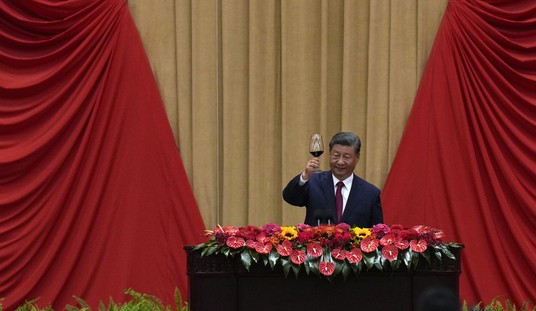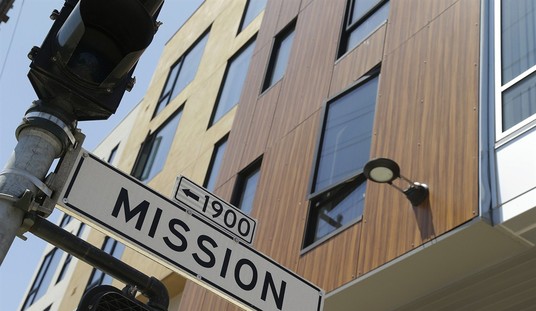Four times Martha MacCallum asked Seema Verma last night whether she’s confident hospitals will have the capacity they need to meet a surge of COVID-19 patients, and four times Verma ducked her. For good reason: “It’s estimated that we have about 45,000 intensive care unit beds in the United States. In a moderate outbreak, about 200,000 Americans would need one,” per the Times.
So, no. The answer’s no. As for ventilators, one recent study estimated that the U.S. has 160,000 of those. Hopefully that’ll be enough, since other less aggressive forms of breathing support like nebulizers can’t be used on coronavirus patients. The risk that they’ll release particles into the air is too high.
The news is not all bad today, but … this is pretty bad, if not unexpected. Watch two minutes, then read on.
Some good news: More testing is coming online. More good news: Trump is set to declare a national emergency, which will free up money for states. Even more good news: The White House is working with retail and pharmaceutical companies to build a web portal that would direct people locally to drive-through facilities for coronavirus testing. Testing that way avoids the risk of further infection by sparing patients from having to sit in a waiting room somewhere before the test.
All of that would have been great news two weeks ago and fabulous news a month ago. We are where we are.
Testing remains the key problem, of course.
Many who fear they have the virus have faced one roadblock after another as they try to get tested, according to interviews with dozens of people across the country.
Some have been rejected because they had no symptoms, even though they had been in proximity to someone who tested positive. Others were told no because they had not traveled to a hot spot abroad, even though they had fevers and hacking coughs and lived in cities with growing outbreaks. Still others were told a bitter truth: There simply were not enough tests to go around.
“The system is not really geared to what we need right now, what you are asking for. That is a failing,” said Dr. Anthony S. Fauci, who leads the National Institute of Allergy and Infectious Diseases, in testimony before the House Committee on Oversight and Reform on Thursday. “It is a failing. I mean, let’s admit it.”
The most comprehensive piece I’ve seen addressing the breakdown in testing is this one today at the Atlantic, which blames a combination of red tape, lack of virus samples, an equipment shortage, and poor leadership for the deficit — about as full-spectrum a failure by the feds as one could conceivably fear at a moment when the country is facing a dire threat. (Here’s an example of red tape, if you’re curious.) The failures extend beyond testing too. Trump deserves credit for banning travel from Europe, which will slightly limit the number of new vectors for the disease’s spread here in the U.S., but it’s hard to square his insistence on strong borders to try to keep out the virus with the cursory screening of people entering the United States for many weeks now:
Maggie McDow, 46, said she had swollen glands when she landed at Dulles International Airport outside Washington, one of 11 airports where travelers who have recently been in China or Iran are being funneled. Ms. McDow had flown from London, but before that, she had stopped in South Korea, a coronavirus hot spot.
Ms. McDow said she heard plenty of instructions from airport officials for those feeling ill in airports abroad. But when she reached the United States, she said, “There was none of that.” A customs officer stamped her passport, and she was on her way…
William Yates, 28, said that did not happen to him. He did not undergo any medical screening before he left Rome, with a layover in London, or before boarding his flight from London to Phoenix. While he experienced no symptoms, he believed he might be stopped since he visited Emilia-Romagna, a region in Italy where provinces have been locked down because of the outbreak.
When he arrived in Phoenix, he was asked only if he had visited Milan.
Full-spectrum failure. NPR published this ominous claim yesterday, which I’m guessing isn’t true just because we’d … surely have heard more about it by now if it were. For the sake of my own sanity, I need to believe that someone in the inner circle like Anthony Fauci would have leaked to the media if Trump were deliberately slow-walking testing.
A previous tweet of this quote did not make it adequately clear that it is Trump who did not push for adequate testing, not Secretary of Health and Human Services Azar. Here is the whole quote for context. @ddiamond pic.twitter.com/ZZ2aPF53m6
— Fresh Air (@nprfreshair) March 12, 2020
Hard to believe. Not that he’d fail to grasp the catastrophic risk in suppressing testing for the sake of “lower numbers” and good PR; I can believe that. I just can’t believe the medical experts around him would tolerate it and keep mum. Presumably the allegation was fed to NPR by Azar or some other CDC/HHS bureaucrat to try to scapegoat Trump for their own bureaucratic failures.
Then again, this news from a few days ago was suspicious:
The White House has ordered federal health officials to treat top-level coronavirus meetings as classified, an unusual step that has restricted information and hampered the U.S. government’s response to the contagion, according to four Trump administration officials.
The officials said that dozens of classified discussions about such topics as the scope of infections, quarantines and travel restrictions have been held since mid-January in a high-security meeting room at the Department of Health & Human Services (HHS), a key player in the fight against the coronavirus.
Staffers without security clearances, including government experts, were excluded from the interagency meetings, which included video conference calls, the sources said.
Four sources is a lot of people leaking all at once. One of them claimed that “critical” advisors were unable to attend meetings because they lack security clearances. Why would you want anyone needlessly out of the loop during a massive, multifaceted bureaucratic endeavor like the feds’ coronavirus response? The obvious suspicion is that HHS has a better idea about the scale of infections then they’re letting on, even if it’s just epidemiological estimates, and they’re trying to cover up that info for now in order to hide the sheer scope of the failure. Something to chew on in relation to that: “Thomas P. Bossert, a former homeland security adviser to Mr. Trump, has tried repeatedly in recent days to be patched through to the president or Vice President Mike Pence to warn them just how dire the coronavirus pandemic really is, only to be blocked by White House officials, according to two people familiar with the events.” While Bossert is being stonewalled, Jared Kushner’s getting advice from his brother’s father-in-law via a Facebook group of fellow ER doctors.
Full-spectrum failure. It’s not going to be good a few weeks from now.
Italy suffered 250 deaths due to coronavirus in just ONE DAY. More than 2,500 new cases were diagnosed in that 24 hours.
Spread in the U.S. has been roughly mirroring the spread seen in Italy, tracking about 10 days behind it.
— Jake Tapper (@jaketapper) March 13, 2020
I think at the moment the country’s been lulled into a false (and fleeting) sense of optimism about the outbreak by the wave of massive shutdowns this past week. Sports are gone, big cultural events are gone, colleges are shutting down, schools are closing, parades are canceled, on and on. Surely that’ll dramatically slow the spread of the disease, no? Yep, it will — but not so much at this point that we avoid an Italy scenario. It’s too late for that, it appears. In fact, according to this expert, because of the lack of testing we might be lucky if it’s “only” as bad here as it is in Italy.
“We are so incredibly underprepared for a major onslaught to the hospitals, which is basically now inevitable,” Dr. Irwin Redlener, director of the National Center for Disaster Preparedness at Columbia University, says to @katebolduan about coronavirus. https://t.co/QBKkW4CBtv pic.twitter.com/at6qA2vcWf
— CNN Newsroom (@CNNnewsroom) March 13, 2020








Join the conversation as a VIP Member